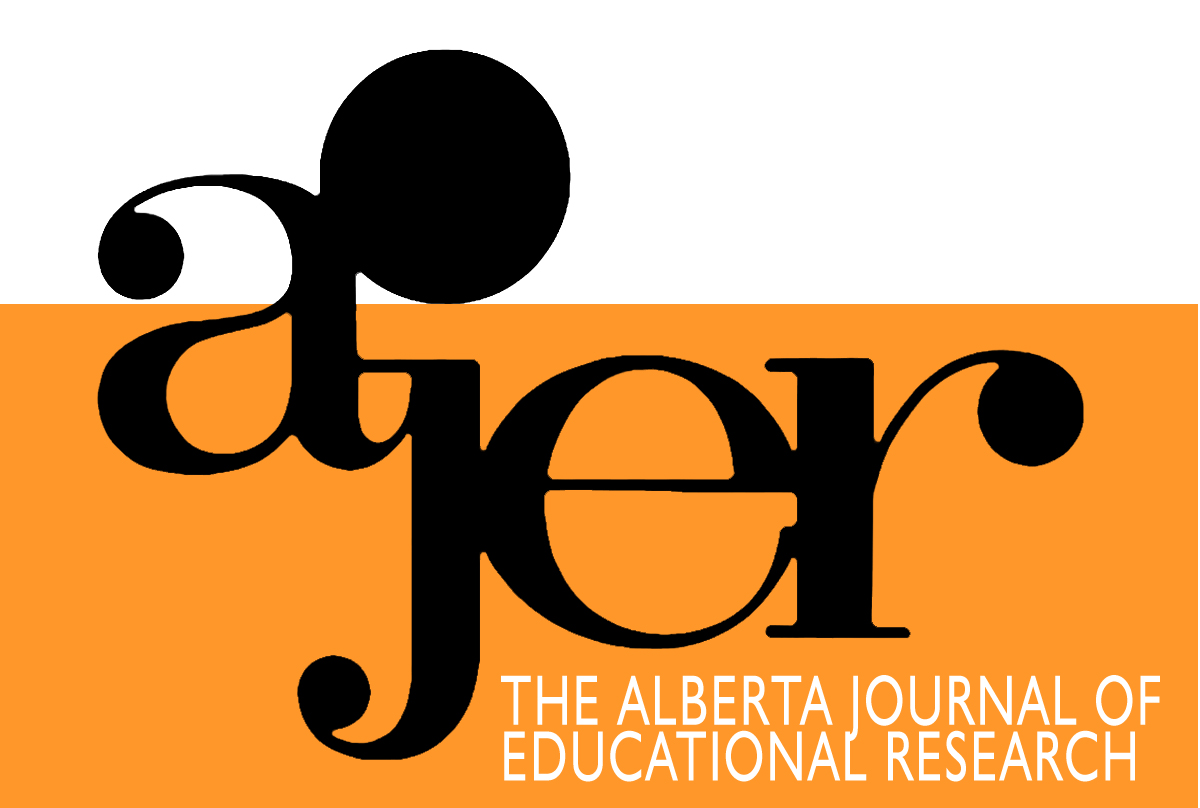Exploring Science Curriculum Emphases in Relation to the Alberta Physics Program-of-Study
DOI:
https://doi.org/10.55016/ojs/ajer.v58i1.55558Keywords:
curriculum, emphasis, perspectives, program-of-study, physicsAbstract
Using Roberts’ (1982, 1988, 1995, 1998, 2003) seven science curriculum emphases as its framework, this investigation into Alberta’s physics program-of-study found that pre-service and novice teachers reported focusing on four of the emphases—Structure of Science; Scientific Skill Development; Science, Technology, and Decisions; and Correct Explanation— while experienced teachers reported focusing on two of the emphases—Structure of Science and Everyday Coping. Other program-of-study aspects that were reported by teachers as being of high priority included holistic views of physics and student engagement, both of which fall beyond Roberts’ framework. Teacher participants focused on different aspects of the program-of-study as compared to a senior curriculum leader in Alberta (i.e., the program manager for secondary sciences in the Curriculum Branch of Alberta Education), suggesting a possible need for professional development for teachers to deliver the program-of-study as intended by Alberta Education. This research increases understanding of how teachers interpret a physics program-of-study with respect to science curriculum emphases.Reprenant comme cadre l'accent que met Roberts sur un programme d'études reposant sur sept priorités en sciences (1982, 1988, 1995, 1998, 2003), cette recherche du programme d'études en physique de l'Alberta a trouvé que les stagiaires et les enseignants débutants se concentraient sur quatre des priorités - La structure de la science; Le développement des habiletés en science; La science, la technologie et les décisions; et La bonne explication - alors que les enseignants plus expérimentés misaient deux des priorités - La structure de la science et Pour faire face au quotidien. Parmi d'autres aspects du programme d'études que les enseignants ont évoqués comme étant prioritaires notons des perspectives holistiques de la physique et l'implication des élèves, deux composantes qui ne sont pas inclues le cadre de Roberts. Les enseignants participants ont misé différents aspects du programme d'études par rapport au chef sénior du programme d'études (c'est-à-dire le gestionnaire de programme des sciences au secondaire de la Direction des programmes d'études de Alberta Education), ce qui donne à penser qu'il pourrait avoir un besoin de développement professionnel pour que les enseignants mettent en œuvre le programme d'études tel que prévu par Alberta Education. Cette recherche vient ajouter à nos connaissances sur l'interprétation que font les enseignants du programme d'études en physique relativement aux priorités en sciences.
Downloads
Issue
Section
License
UNIVERSITY OF ALBERTA COPYRIGHT LICENSE AND PUBLICATION AGREEMENT
If accepted, authors will be asked to sign a copyright agreement with the following points:
A. Where there is any inconsistency between this Copyright License and Publication Agreement and any other document or agreement in relation to the same subject matter, the terms of this Agreement shall govern.
B. This document sets out the rights you are granting in relation to publication of your article, book review, or research note entitled (the “Article”) through inclusion in the academic journal titled Alberta Journal of Educational Research (the “Journal”) published through the Faculty of Education, representing the Governors of the University of Alberta (the “Journal Editor”).
C. There will be no payment to you for this publication and grant of rights. In consideration of the agreement to publish the Article in the Journal:
1. You are warranting that:
- the content of the Article is your original work, and its content does not contain any material infringing the copyright of others; or, where the Article is not entirely your original work, you have obtained all necessary permissions in writing to grant the rights you are giving in this agreement;
- the content of the Article does not contain any material that is defamatory of, or violates the privacy rights of, or discloses the confidential information of, any other person;
- the Article has not been published elsewhere in whole or in part, and you will not allow publication of the Article elsewhere without the consent of the Journal Editor;
- the names of all co-authors and contributors to the Article are:
2. You agree to license the copyright in the Article to the Journal Editor, on a worldwide, perpetual, royalty free basis; and to the extent required by the terms of this agreement. You shall retain the right at all times to be acknowledged as the/an author of the Article.
3. You further agree that the Journal Editor has the entitlement to deal with the Article as the Journal Editor sees fit, and including in the following manner;
- The right to print, publish, market, communicate and distribute the Article and the Journal, in this and any subsequent editions, in all media (including electronic media), in all languages, and in all territories, ing the full term of copyright, and including any form of the Article separated from the Journal, such as in a database, abstract, offprint, translation or otherwise, and to authorize third parties to do so;
- The right to register copyright of the Journal;
- The right to edit the Article, to conform to editorial policy as the Journal Editor sees fit.
4. If any co-author or contributor to the Article does not sign this agreement, the Journal Editor reserves the right to refuse to publish the Article.



